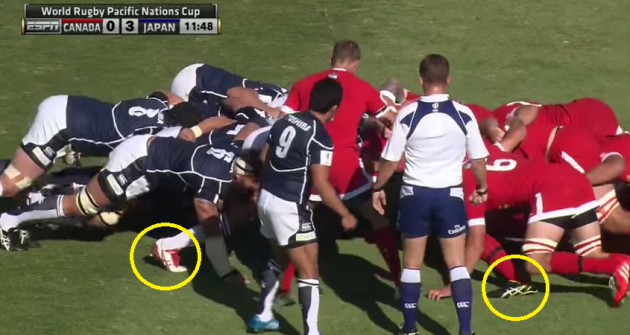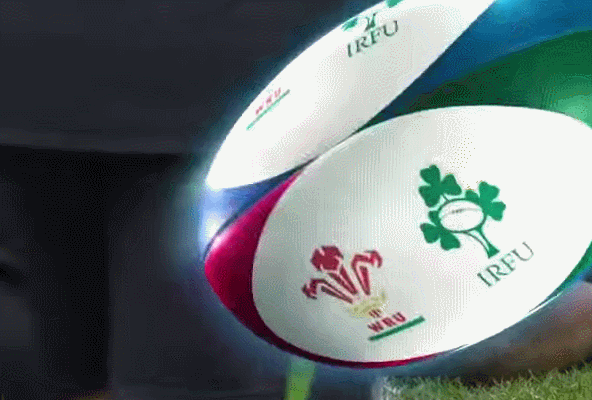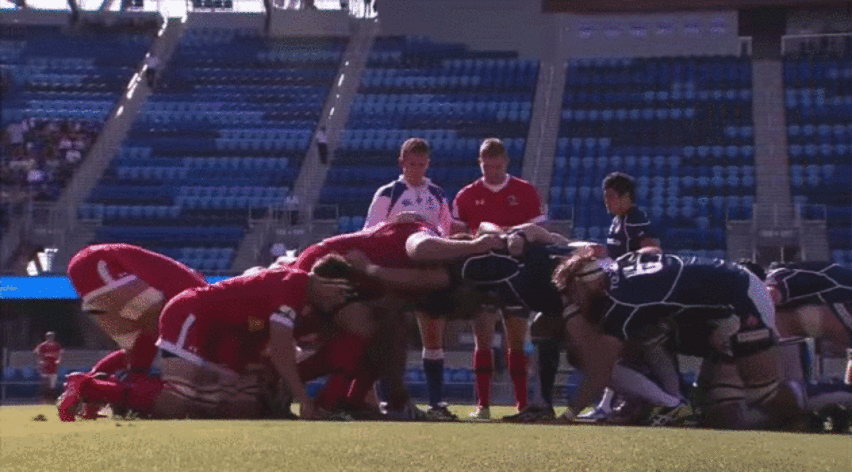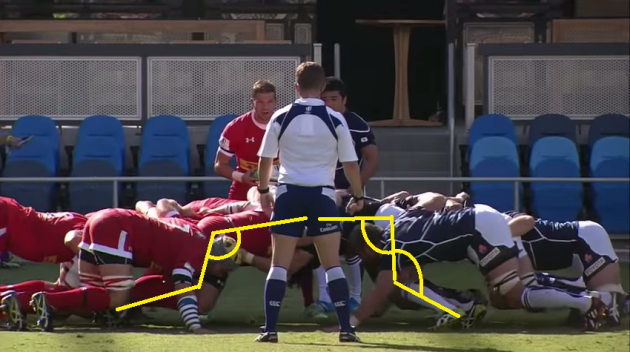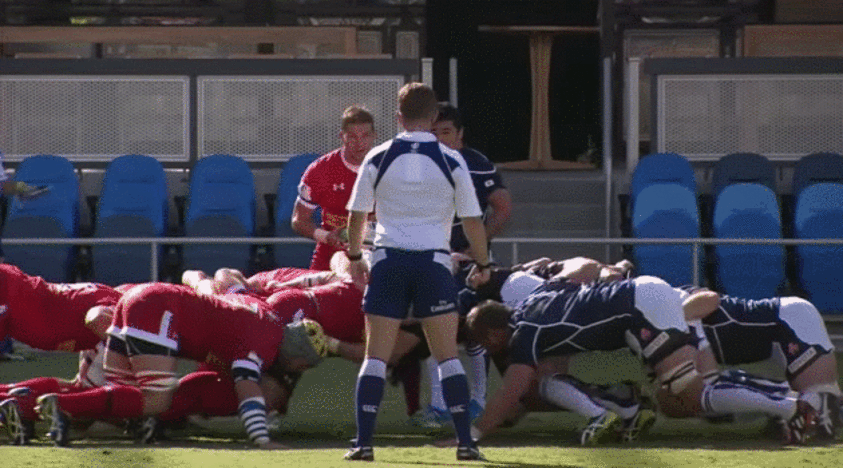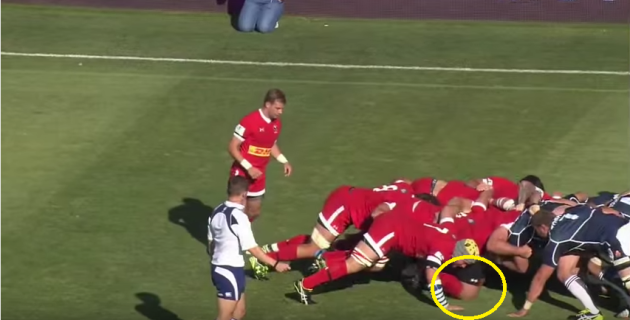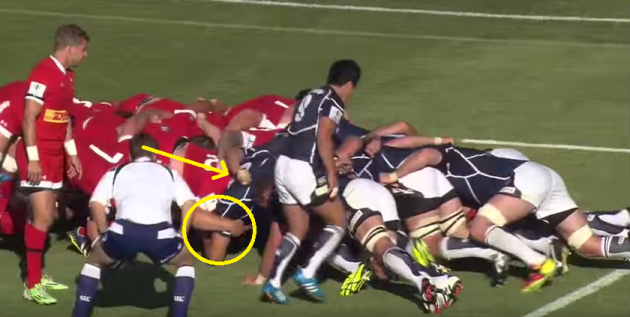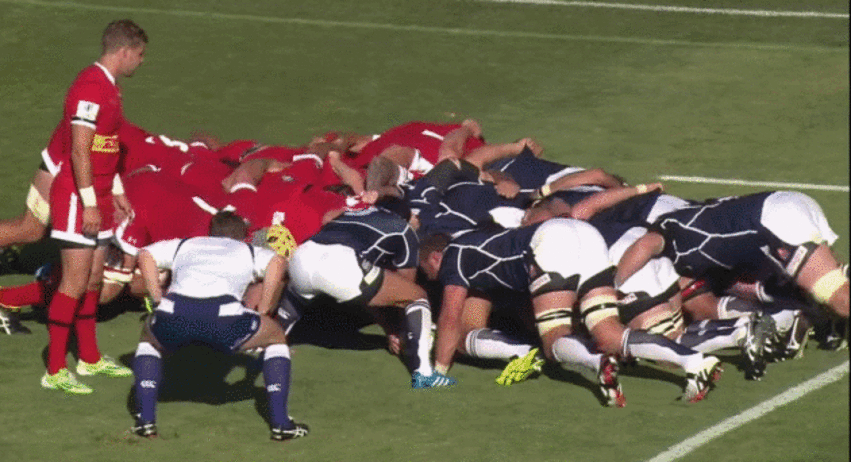WHILE ROMANIA WILL provide a big scrummaging test on Sunday week, the same can’t really be said of Canada this weekend.
With the big rugby nations used to between 10 and 15 scrums per game at test level, it’s hitting around 17 or 18 per game when Tier 2 sides lock down.
With the scrum being a controlled environment, nailing down a powerful setpiece has obvious benefits, as the Romanians have proved in the past 12 months.
But for Canada, the prospect of giving Ireland’s scrum coach Greg Feek a headache doesn’t look to be on the radar.
It’s at tighthead where they look at their weakest. Neither Doug Wooldridge nor Andrew Tiedemann inspired confidence during the Pacific Nations Cup and warm-up games, and while they’ve looked capable at times at loosehead, Ireland should cope easily whether Ross, White or Furlong starts.
With Cian Healy having been on the sidelines for the past three months nursing his neck injury, Saturday’s game against the Canadians represents the perfect opportunity to give him a runout to blow off the cobwebs.
Next week’s opponents Romania will provide a big test of the front row, so gametime for Healy against Canada looks like the logical step, with the 27-year-old capable of targeting the Canadian weak-point.
Doug Wooldridge and Andrew Tiedemann have swapped the number three jersey back and forth for the previous two months of rugby, and neither have inspired confidence.
Against Japan – one of the better Tier 2 scrummagers – in the Pacific Nations Cup, Canada really struggled, with their tighthead problems regularly exposed.
Wooldridge started that game, and he caused an early collapse, one which was let go by referee Luke Pearce.
They had problems on both sides however, with Hubert Buydens at loosehead showing poor footwork on the first scrum of the day, which caused him to partially lose his stability.
He’s almost fully planted his feet in the ground, in stark contrast to Hiroshi Yamashita, who has much more purchase in the ground, pushing off the front of his feet.
Planting your feet isn’t really advisable in the front row, and not just because of the potential power it removes.
As Wales’ Samson Lee found out against Ireland in the Six Nations, it can have seriously painful consequences, with his torn achilles almost keeping him out of the World Cup.
While Buydens got his footwork wrong, it was Wooldridge at tighthead who had the most problems, collapsing to his knee, before pulling Hisateru Hirashima to the ground.
Wooldridge won his side a penalty at the next scrum, but it was only after the original scrum had been reset. He was lucky to get the reset, having pretty much flopped to the ground as soon as the scrum engaged.
In most cases, a slip is worthy of a reset, but if you keep an eye on his footwork, it doesn’t seem to be the case, with Wooldridge just not accepting the hit.
However when it is reset, he does deservedly get his penalty, and it’s quite a good call by referee Luke Pearce.
On first viewing it looks as if Wooldridge had been binding on his opponents arm and dragging him down, but when you closely examine it, he appears to be bound just beyond the armpit, with the stretch of the jersey making it look like he’s bound to the arm.
Pearce makes another excellent call at the scrum soon after, but this time Wooldridge was badly exposed.
With so many of the game’s problems coming on his side of the scrum, Pearce had started watching Wooldridge and Hirashima quite closely.
When the scrum inevitably collapses again, it’s the Canadian who gets pinged for dropping it, as a result of his legs being way too far behind his body, and thus not being able to support him.
The ideal breakdown of the angles is to have as close to 90 degrees of a bend at the hips, and a 120 degree flex at the knees, just as Hirashima is doing above for Japan.
However we can see that there is a far more obtuse bend at the hips for Wooldridge, and as a results, that makes the bend at his knees extend even further.
With his feet so far back from his body, it becomes very difficult to step forward and keep the scrum upright.
The longer the game went on, the worse things got for Wooldridge, and he conceded another penalty at the start of the second half for dropping to his knees again.
What’s interesting about this penalty was that after referee Pearce told Canada to use the ball, they began marching forward, with Wooldridge on his knees all the while.
Pearce penalised them despite this which is good to see, with the majority of referees allowing teams to get away with anything as long as they’re moving forward.
With Wooldridge continuing to struggle, he was eventually substituted for Andrew Tiedemann, but it didn’t do much to stop the Japanese dominance.
Tiedemann got turned on his opening scrum, but it was on his second that he really found himself in trouble. He couldn’t cope with Hirashima’s power, eventually binding on his arm and attempting to pull him down. We can see in the picture below that he’s clearly bound to the Japanese player’s arm, and is scrummaging with his head considerably below his hips.
Hirashima manages to stay upright, and eventually marches Tiedemann back again, before he fully collapses the scrum.
Tighthead was a constant problem for the Canadians throughout the Pacific Nations Cup, with Tiedemann and Wooldridge swapping back and forth in the starting shirt, neither impressing enough to keep it.
Against Tonga in Vancouver, such was the hiding Tiedemann got in the scrum he departed at half time.
While Hubert Buydens and Dhustice Sears-Duru look someway competent at loosehead, it doesn’t look likely that they’ll put the Irish selection under too much pressure, and their troubles at tighthead are only compounded given the power available at loosehead.
The party line in the Irish camp is that Cian Healy is ready to play, and if that’s the case this game is tailor-made for him. Healy is an exceptional scrummager, and getting valuable gametime against a weak Canadian scrum would be invaluable, given the challenge that the Romanian pack will pose next week.
Tadhg Furlong is also a viable option at loosehead this weekend rather than next, when his inexperience in the position could be an issue, and it would be advisable to keep Jack McGrath as fresh as possible for next week’s game in Wembley.
As Tom Court told The42 last week, tighthead is the position where more can go wrong in the scrum, and in Canada’s case, they’ll need major improvements from their Pacific Nations and warm-up form to stay competitive this weekend.
